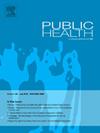Health literacy: Reducing inequalities in healthcare access through improving the readability of healthcare material in the Northeast of England-a qualitative evaluation
IF 3.2
3区 医学
Q1 PUBLIC, ENVIRONMENTAL & OCCUPATIONAL HEALTH
引用次数: 0
Abstract
Objectives
Lower health literacy increases the risk of chronic illness, premature mortality, and health-harming behaviours. Leading to higher healthcare utilisation and lower preventive care participation. Many adults in England read at a 9–11-year level making most healthcare materials inaccessible. This study aimed to assess an intervention modifying healthcare materials’ readability in a hospital trust in North-East England by evaluating patient and staff perspectives.
Study design
Guided by the Theoretical Framework of Acceptability, a qualitative design evaluated modified patient leaflets for routine outpatient clinics, adjusted to a reading age of 9–11 years to align with the national average. Stakeholder perspectives on modified and unmodified materials were explored.
Methods
Twenty-five participants (six males, 19 females; aged 18–60, including 12 healthcare providers and 13 service users) with varying health literacy were recruited from four medical specialties in a single hospital trust in the northeast of England. Semi-structured interviews were conducted and analysed using Framework method.
Results
Participants preferred the modified materials for their clarity. Simpler language was perceived as reducing stigma and increasing confidence to engage with healthcare professionals. Service users felt empowered to manage their health, as revised materials were easier to understand. Healthcare providers valued improved readability, anticipating enhanced patient engagement and reduced misunderstandings. Participants emphasised the ethical imperative for accessible healthcare information to reduce inequalities.
Conclusions
Improving readability is welcomed and necessary to reduce structural inequalities. As disparities persist, ensuring accessible healthcare information could be a cost-effective scalable strategy. Further research should assess effectiveness on health outcomes.
健康素养:通过提高英格兰东北部医疗保健材料的可读性来减少医疗保健获取方面的不平等——一项定性评价
目的:低健康素养会增加慢性病、过早死亡和健康危害行为的风险。导致更高的医疗保健利用率和更低的预防保健参与。在英国,许多成年人的阅读水平为9 - 11年,这使得大多数医疗保健材料难以获得。本研究旨在通过评估患者和工作人员的观点,评估干预措施修改医疗保健材料的可读性在英格兰东北部的医院信托。研究设计在可接受性理论框架的指导下,定性设计评估了常规门诊诊所修改后的患者宣传单,调整为9-11岁的阅读年龄以与全国平均水平保持一致。探讨了利益相关者对改性和未改性材料的看法。方法25例受试者(男6例,女19例;年龄在18-60岁之间(包括12名医疗保健提供者和13名服务使用者),具有不同的健康素养,从英格兰东北部一家医院信托的四个医学专业招募。采用框架法进行半结构化访谈并进行分析。结果实验对象对改性材料的清晰度比较满意。更简单的语言被认为减少了耻辱,增加了与医疗保健专业人员接触的信心。服务使用者感到有能力管理自己的健康,因为修订后的材料更容易理解。医疗保健提供者重视改进的可读性、提高患者参与度和减少误解。与会者强调,为减少不平等现象,提供医疗保健信息具有道德上的必要性。结论提高可读性是受欢迎的,也是减少结构性不平等的必要措施。由于差距持续存在,确保可获得医疗保健信息可能是一种具有成本效益的可扩展策略。进一步的研究应评估对健康结果的有效性。
本文章由计算机程序翻译,如有差异,请以英文原文为准。
求助全文
约1分钟内获得全文
求助全文
来源期刊

Public Health
医学-公共卫生、环境卫生与职业卫生
CiteScore
7.60
自引率
0.00%
发文量
280
审稿时长
37 days
期刊介绍:
Public Health is an international, multidisciplinary peer-reviewed journal. It publishes original papers, reviews and short reports on all aspects of the science, philosophy, and practice of public health.
 求助内容:
求助内容: 应助结果提醒方式:
应助结果提醒方式:


